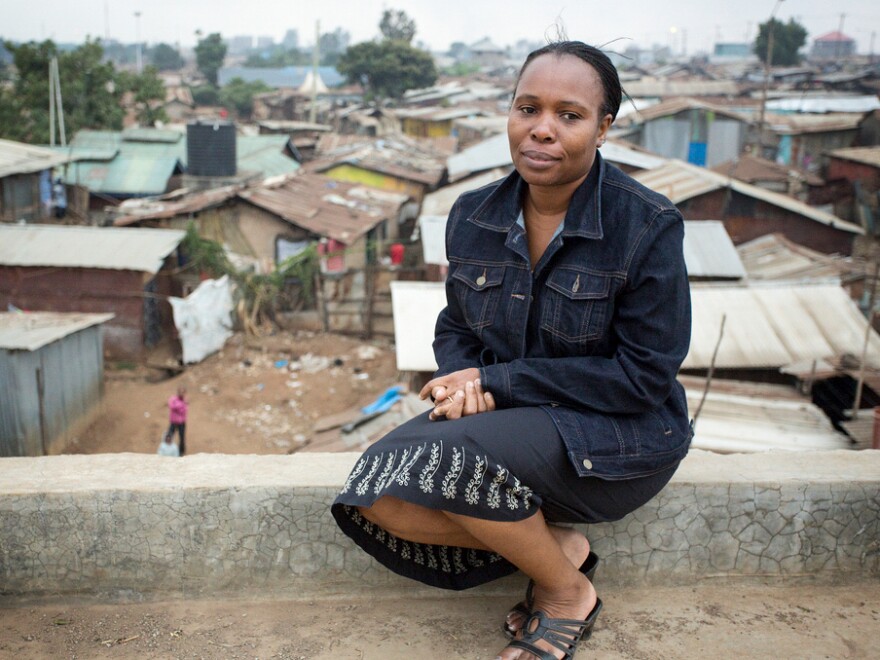Today is World Toilet Day, a chance to think about the billions of people in the world who don't have toilets. People like me.
I grew up in an informal settlement in Kenya in the 1970s. When nature called, my only option was to visit the community toilets. These were toilets you squat over. You'd pour in water but there was no flush. And they were housed in a shed.
To get there, I had to walk 10 minutes, stand in the queue for my turn and be vigilant about my safety. At crowded times, like in the morning and evening, I might have to wait 10 minutes. The people in line would be dancing to keep from peeing and complaining about how the people using the toilets were taking too long.

In sum, a toilet was a facility I could only access with great difficulty.
It was also filthy. The toilets were never cleaned. One had to master special maneuvers to avoid messing oneself with human waste found inside. Since there was no toilet paper, people would wipe their hands on the walls. If you were wearing a sweater, you learned to remove it before entering — or else the stench would stick with you. And for this experience, I had to pay a shilling per visit, money that was not available readily.
There was nothing worse than getting an upset stomach due to bad food or water. This meant visiting the toilet many times in a day.
I say "day" because, for a girl, visiting the toilet at night can be very risky. Walking in the dark gives men opportunities to prey on young girls — to molest or rape them. My friends and I were terrified of this possibility and never ventured out between dusk and dawn.
So how did we cope?
We developed several strategies over time. We avoided drinking water at all costs, which of course is not healthy. Sometimes we would go to a restaurant and pretend to be waiting for a friend to have an excuse to use the toilet. Then we would leave when the friend couldn't make it after all. Another option was to visit a church compound that had a toilet and pretend we had come for prayers. We also would use a plastic shopping bag, especially at night, and throw it in the morning to wherever it will land. This is known as the flying toilet.
You might think the toilets would be better in school, but they were not. The facilities were horrible. For safety reasons and privacy, one girl had to stand guard at the doorway for another to use the toilet. Toilet paper was a status symbol. If you had your own from home, you were considered advanced.
During menstruation, many girls would skip school to stay at home. If they soiled their clothes in front of their peers, there was no place to go and change. My friends and I would often miss two to three days each month just to avoid potential shame. Although this affected attendance and performance among girls, I don't remember this issue being addressed by the school. It was seen as normal, and no effort was made to help the girls catch up with the lessons they had missed. This was the time that many girls dropped out. I stayed in school, but it was not easy.
In order for a school to be a place where pupils can learn, there must be clean toilet facilities to keep students safe from embarrassment. One reason I chose to go to in Uganda was the fact that I knew well-lit toilet facilities were within easy reach. I could not only acquire education but also have access to the toilet whenever I needed. And at last, I was able to drink water all the time without worrying.
Many of the Sustainable Development Goals endorsed by the U.N. this year hinge on girls gaining an education. We need to recognize that in many regions of the world, that hinges on creating facilities such as toilets and hand-washing stations and providing a supply of sanitary pads for students. This would go a long way in ensuring that girls feel confident at school and look forward to attending classes.
As we celebrate World Toilet Day, let us focus on sensitizing communities and schools about this issue. Let's acknowledge that it is a big challenge for children living in informal settlements and do what we can – including building pit latrines near households and constructing clean toilets at schools.
I now live in a house with my husband and three children — and we have four toilets. They're clean and nice! That's the dream for everybody.
Jane Otai is a senior program adviser for , a health organization affiliated with the Johns Hopkins University, in Nairobi, Kenya. She is a 2013 fellow of the Aspen Institute's New Voices Fellowship.
Copyright 2021 NPR. To see more, visit https://www.npr.org. 9(MDEwMTk5OTQ0MDEzNDkxMDYyMDQ2MjdiMw004))





